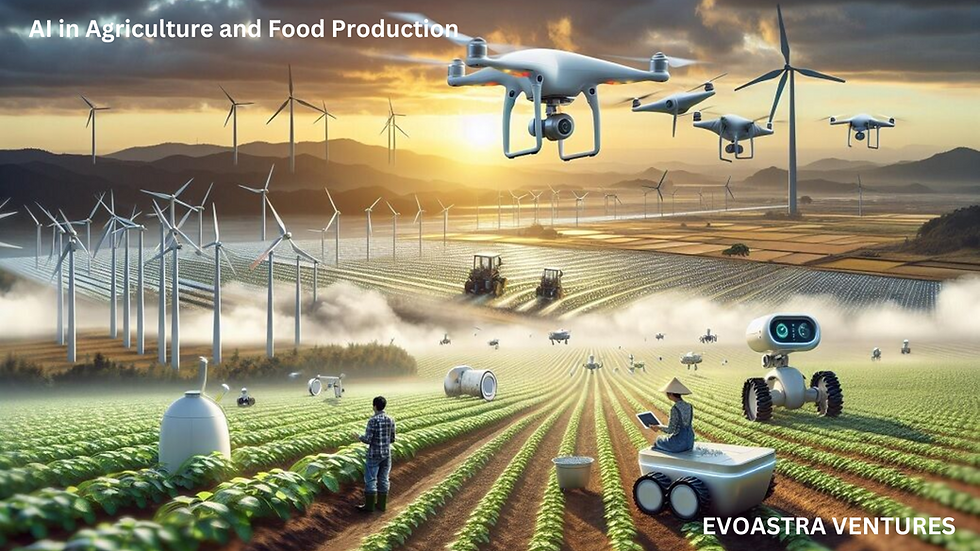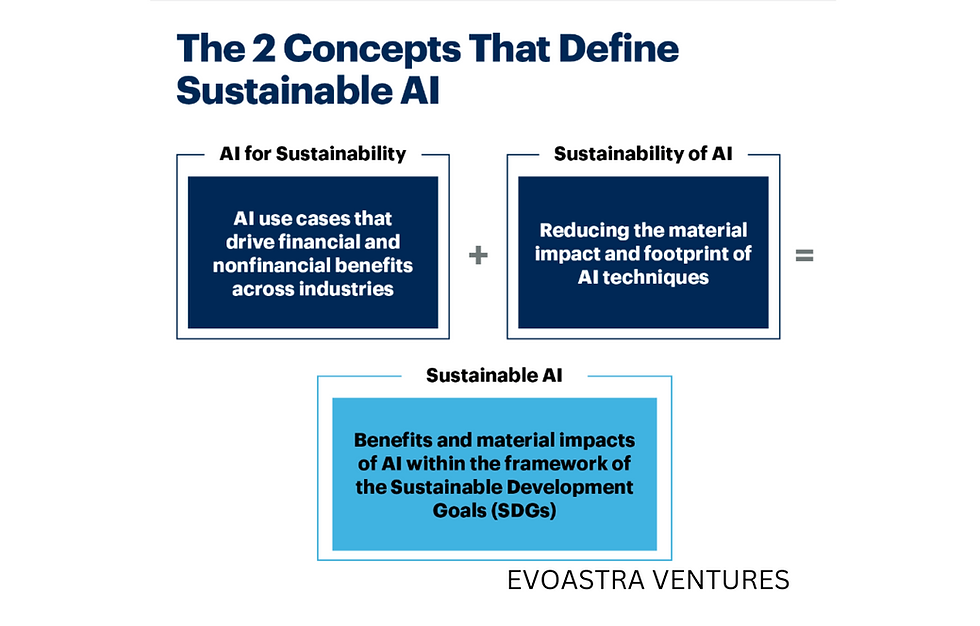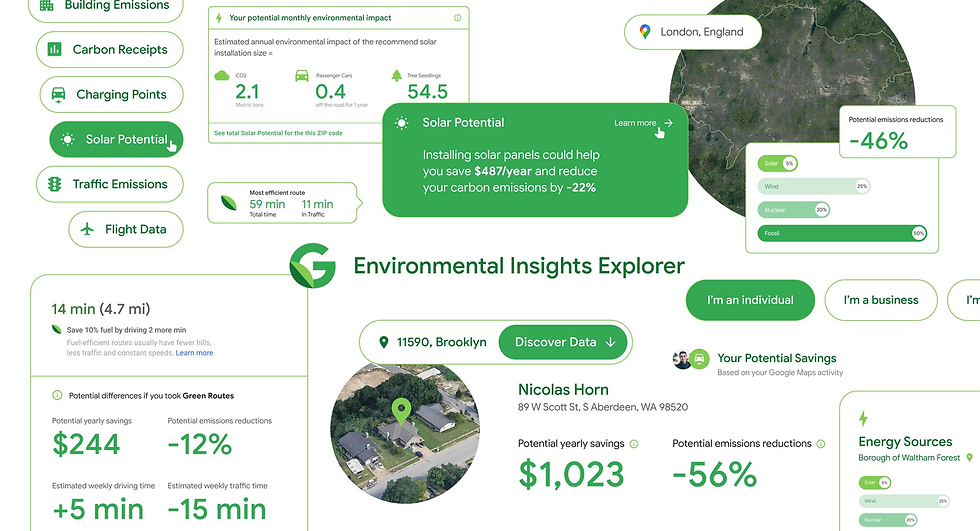AI and Climate Change: Mitigating Environmental Impact
- Shaurya Pratap Singh
- Jul 18
- 5 min read

Introduction
Climate change is no longer a distant threat but an urgent reality. From rising sea levels to extreme weather events, the planet is undergoing significant transformations. Amidst these changes, Artificial Intelligence (AI) emerges as a powerful ally in our fight against environmental degradation. By leveraging AI, we can monitor environmental changes, model climate scenarios, and develop sustainable solutions.
The Role of AI in Environmental Monitoring
AI's capabilities in processing vast amounts of data make it invaluable for environmental monitoring.

Satellite Imagery Analysis
Satellites equipped with AI can analyze imagery to track deforestation, glacial movements, and urban sprawl. These insights are crucial for understanding the pace and impact of climate change.
Sensor Networks and IoT
Internet of Things (IoT) devices, combined with AI, form sensor networks that monitor air and water quality, soil moisture, and wildlife habitats. These networks provide real-time data that help in responding swiftly to environmental changes.
Data Collection and Processing
AI systems can process data from multiple sources, creating a comprehensive picture of the environment. This data integration aids in identifying patterns and predicting future changes, allowing for proactive measures.
AI in Climate Modeling
AI in climate modeling enhances our ability to predict and understand climate change by analyzing vast data sets for patterns and trends. This improves the accuracy of climate forecasts, aiding in the development of effective mitigation strategies. AI also makes simulations more efficient, allowing for detailed studies of climate phenomena. As a result, AI plays a crucial role in advancing our response to the global climate crisis.
Predictive Analytics
AI-powered predictive analytics use historical data to forecast future climate trends. These predictions help policymakers and scientists prepare for potential impacts.
Simulation Models
AI enhances simulation models that replicate climate systems, providing insights into how different factors interact. These models can simulate various scenarios, helping in understanding potential outcomes of climate policies.
Accuracy and Reliability Improvements
AI improves the accuracy and reliability of climate models by continuously learning from new data. This adaptive learning ensures that models remain relevant and precise.

Sustainable Solutions Powered by AI
AI drives innovation in sustainable solutions across various sectors.
Renewable Energy Optimization
AI algorithms optimize the production and distribution of renewable energy. For example, AI can predict wind patterns for wind turbines, maximizing energy output.

Smart Grids and Energy Management
Smart grids, managed by AI, distribute electricity more efficiently, reducing waste. AI also helps in balancing supply and demand, ensuring that renewable sources are utilized optimally.
AI in Agriculture and Food Production
AI-driven precision agriculture uses data to optimize irrigation, reduce pesticide use, and enhance crop yields. This approach not only increases food production but also minimizes environmental impact.

"AI in agriculture and food production optimizes crop yields and reduces waste through precision farming techniques. It also enhances sustainability by providing data-driven insights for resource management."
AI in Reducing Carbon Footprint
Reducing carbon emissions is critical in mitigating climate change, and AI plays a significant role in this effort.
Transportation and Logistics Optimization
AI optimizes routes and schedules for transportation, reducing fuel consumption and emissions. Autonomous electric vehicles, guided by AI, further contribute to this reduction.
Industrial Energy Efficiency
AI helps industries monitor and optimize their energy use, identifying areas for improvement and reducing wastage. This efficiency leads to lower emissions and cost savings.
Carbon Capture and Storage Technologies
AI advances carbon capture and storage (CCS) technologies by improving the efficiency and effectiveness of these systems. AI algorithms analyze data to enhance the capture process and monitor stored carbon.
AI-Driven Environmental Policies
AI aids in the development and implementation of effective environmental policies.
Policy Simulation and Impact Assessment
AI simulates the potential impacts of various policies, helping policymakers choose the most effective measures. These simulations consider multiple variables, providing a holistic view of potential outcomes.
Enhancing Regulatory Frameworks
AI analyzes compliance data to ensure adherence to environmental regulations. This analysis helps in identifying gaps and improving regulatory frameworks.
Public Awareness and Engagement
AI-driven platforms raise public awareness about climate change and engage communities in sustainable practices. These platforms provide personalized recommendations, making it easier for individuals to contribute.
Case Studies: AI in Action
Google's Environmental Insights Explorer
Google's Environmental Insights Explorer uses AI to provide cities with data on carbon emissions, solar energy potential, and building efficiency. This tool helps cities plan and implement sustainable practices.
"Google's Environmental Insights Explorer provides data-driven insights to help cities reduce carbon emissions and improve sustainability."
IBM's Green Horizon Project
IBM's Green Horizon Project leverages AI to improve air quality forecasting and optimize renewable energy integration. This project demonstrates the potential of AI in creating a sustainable urban environment.
Microsoft's AI for Earth Program
Microsoft's AI for Earth program supports projects that use AI to tackle environmental challenges. From biodiversity conservation to climate modeling, this initiative highlights AI's diverse applications in environmental protection.
Challenges and Ethical Considerations
While AI offers numerous benefits, it also presents challenges and ethical dilemmas.
Data Privacy and Security
The extensive data collection required for AI raises concerns about privacy and security. Ensuring that data is protected and used ethically is paramount.

Bias and Fairness in AI Algorithms
AI algorithms can perpetuate biases if not carefully designed and monitored. It's crucial to address these biases to ensure fair and equitable outcomes.
Balancing Technological Advancement with Environmental Impact
The development and deployment of AI technologies must consider their environmental footprint. Sustainable practices should be prioritized to balance technological advancement with environmental preservation.
Future Directions of AI in Climate Change
AI's role in combating climate change will continue to evolve.

Emerging Technologies and Innovations
New AI technologies and innovations will enhance our ability to address climate challenges. Continued research and development are essential for discovering novel solutions.
Collaboration Between AI Researchers and Environmental Scientists
Collaboration between AI researchers and environmental scientists will drive interdisciplinary solutions. This partnership will ensure that AI applications are grounded in scientific understanding.

Long-Term Vision for AI-Driven Sustainability
A long-term vision for AI-driven sustainability involves integrating AI into all aspects of environmental management. This vision requires ongoing commitment and innovation to achieve lasting impact.
Conclusion
AI is a powerful tool in our fight against climate change. From monitoring environmental changes to developing sustainable solutions, AI offers numerous opportunities to mitigate the environmental impact. However, it's essential to address the challenges and ethical considerations to ensure that AI is used responsibly. By embracing AI and fostering collaboration, we can create a more sustainable future for our planet.
FAQs
What is the most significant impact of AI on climate change?
AI's most significant impact on climate change is its ability to analyze vast amounts of data, leading to more accurate climate models and effective mitigation strategies.
How does AI improve the accuracy of climate models?
AI improves the accuracy of climate models by continuously learning from new data and enhancing predictive analytics and simulation models.
What are some examples of AI in renewable energy management?
Examples include optimizing wind turbine production, managing smart grids, and balancing supply and demand for renewable energy sources.
What ethical considerations arise with the use of AI in climate change mitigation?
Ethical considerations include data privacy and security, addressing biases in AI algorithms, and ensuring that the development of AI technologies considers their environmental impact.
How can individuals contribute to AI-driven climate solutions?
Individuals can contribute by adopting sustainable practices, supporting AI-driven environmental initiatives, and staying informed about AI's role in combating climate change.






Comments